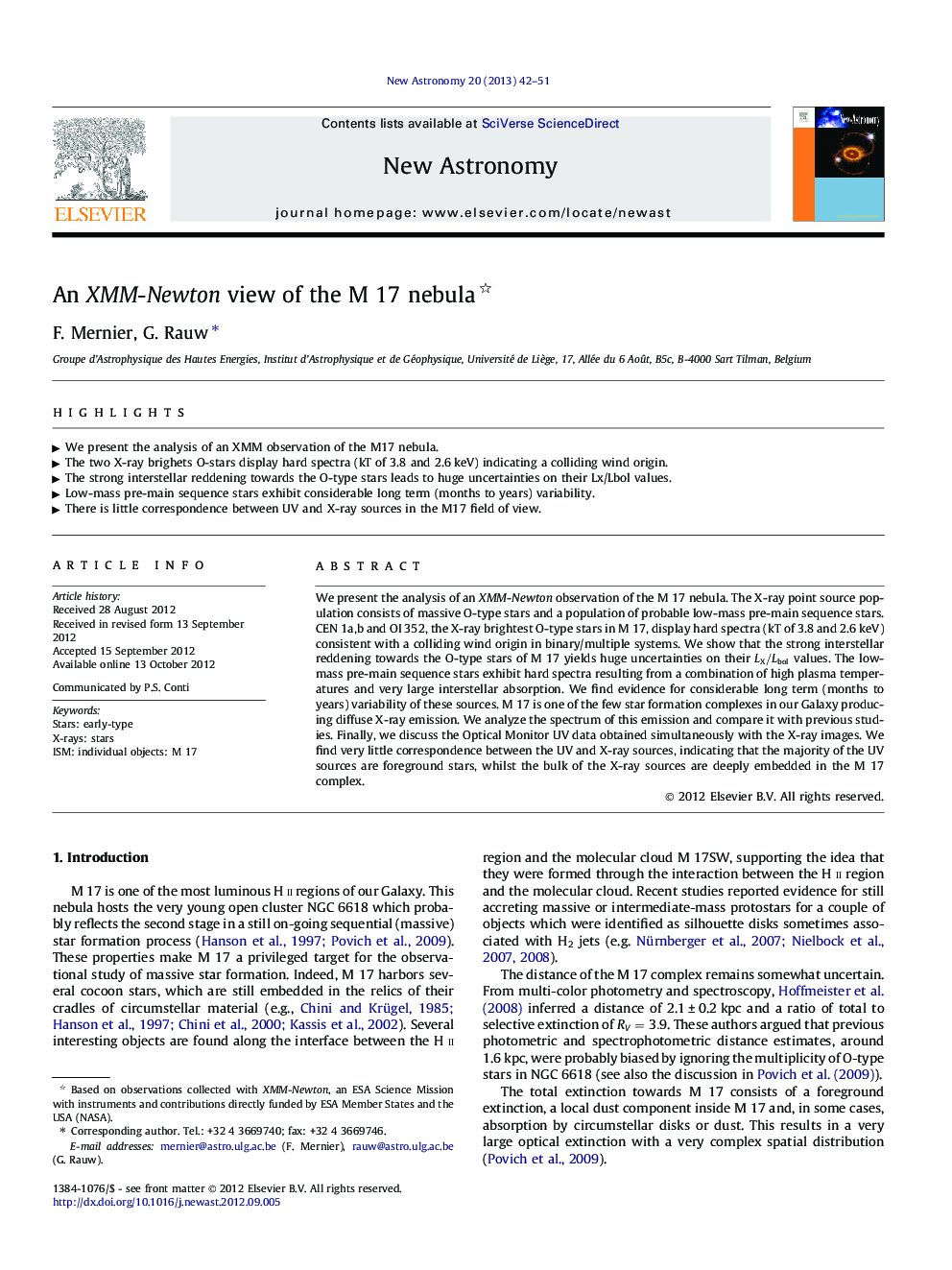| کد مقاله | کد نشریه | سال انتشار | مقاله انگلیسی | نسخه تمام متن |
|---|---|---|---|---|
| 1779110 | 1523757 | 2013 | 10 صفحه PDF | دانلود رایگان |

We present the analysis of an XMM-Newton observation of the M 17 nebula. The X-ray point source population consists of massive O-type stars and a population of probable low-mass pre-main sequence stars. CEN 1a,b and OI 352, the X-ray brightest O-type stars in M 17, display hard spectra (kT of 3.8 and 2.6 keV) consistent with a colliding wind origin in binary/multiple systems. We show that the strong interstellar reddening towards the O-type stars of M 17 yields huge uncertainties on their LX/LbolLX/Lbol values. The low-mass pre-main sequence stars exhibit hard spectra resulting from a combination of high plasma temperatures and very large interstellar absorption. We find evidence for considerable long term (months to years) variability of these sources. M 17 is one of the few star formation complexes in our Galaxy producing diffuse X-ray emission. We analyze the spectrum of this emission and compare it with previous studies. Finally, we discuss the Optical Monitor UV data obtained simultaneously with the X-ray images. We find very little correspondence between the UV and X-ray sources, indicating that the majority of the UV sources are foreground stars, whilst the bulk of the X-ray sources are deeply embedded in the M 17 complex.
► We present the analysis of an XMM observation of the M17 nebula.
► The two X-ray brighets O-stars display hard spectra (kT of 3.8 and 2.6 keV) indicating a colliding wind origin.
► The strong interstellar reddening towards the O-type stars leads to huge uncertainties on their Lx/Lbol values.
► Low-mass pre-main sequence stars exhibit considerable long term (months to years) variability.
► There is little correspondence between UV and X-ray sources in the M17 field of view.
Journal: New Astronomy - Volume 20, April 2013, Pages 42–51